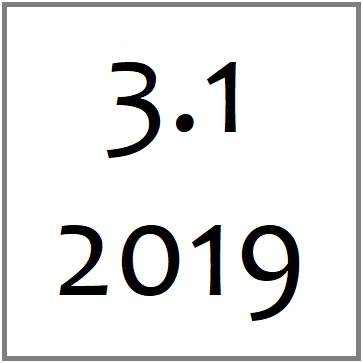References
Anzaldúa, G. (1999[1987]) Borderlands/La Frontera. San Francisco, CA: Aunt Lute Publishers.
Appadurai, A. (2006). The right to research. Globalisation, societies and education, 4(2), 167-177.
Banks, M. (2007). Using visual data in qualitative research. Los Angeles, CA: Sage Publications.
Barcelos, C., & Gubrium, A. (2018). Bodies That Tell: Embodying teen pregnancy through digital storytelling. Signs: Journal of Women in Culture and Society, 43(4), pp. 905-27.
Braun, V. & Clark, V. (2012). Thematic analysis. In H. Cooper (Ed.) APA Handbook of Research Methods in Psychology: Vol. 2 (pp. 57-71), American Psychological Association.
Cahill, C. (2007). The personal is political: Developing new subjectivities through participatory action research. Gender, place and culture, 14(3), 267-292.
Cahill, C., Sultana, F., & Pain, R. (2007). Participatory ethics: Politics, practices, institutions. ACME: an international e-journal for critical geographies, 6(3), 304-318.
Conference on College Composition and Communication (2016). CCCC Statement on Community-Engaged Projects in Rhetoric and Composition [Position statement]. Retrieved from http://cccc.ncte.org/cccc/resources/positions/community-engaged.
Cooke, B., & Kothari, U. (Eds.). (2001). Participation: The new tyranny. Zed books.
Daiute, C., & Fine, M. (2003). Youth perspectives on violence and injustice. Journal of Social issues, 59(1), 1-14.
Durham, D. (2000). Youth and the social imagination in Africa: Introduction to parts 1 and 2. Anthropological quarterly, 73(3), 113-120.
Fals-Borda, O., & Rahman, M. A. (Eds.). (1991). Action and knowledge: Breaking the monopoly with participatory action-research. New York, NY: Apex Press.
Fields, A., Martin, L. T., Licona, A. C., & Tilley, E. H. (2015). Performing urgency: Slamming and spitting as critical and creative response to state crisis. Topoi.
Fine, M. (2007). Resisting the passive revolution: Democratic, participatory research by youth. In D. Carlson and C. P. Gause (Eds.) Keeping the Promise: Essays on Leadership, Democracy, and Education (pp. 303-320). New York, NY: Peter Lang Publishing.
Fine, M. (2008). An Epilogue of Sorts. In J. Cammarota and M. Fine (Eds.) Revolutionizing Education: Youth participatory action research in motion (pp. 213-234). Routledge.
Fine, M., & Barreras, R. (2001). To be of use. Analyses of Social Issues and Public Policy, 1(1), 175-182.
Fine, M., & Torre, M. E. (2004). Re-membering exclusions: Participatory action research in public institutions. Qualitative Research in Psychology, 1(1), 15-37.
Fonow, M. M. & Cook, J.A. (2005). Feminist Methodology: New applications in the academy and public policy. Signs 30(4), 2211-2236.
Fox, M., Mediratta, K., Ruglis, J., Stoudt, B., Shah, S., & Fine, M. (2010). Critical youth engagement: Participatory action research and organizing. In L. R. Sherrod, J. Torney‐Purta & C. A. Flanagan (Eds.) Handbook of Research on Civic Engagement in Youth (pp 621-649), Hoboken, NJ: John Wiley and Sons Inc.
Grabill, J. T. (2010). On being useful: Rhetoric and the work of engagement. In J. A. Ackerman and D. J. Coogan (Eds.) The public work of rhetoric: Citizen-scholars and civic engagement (pp. 193-208), University of South Carolina press.
Grabill, J. T. (2012). Community-based research and the importance of a research stance. In L. Nickoson and M. P. Sheridan (Eds.) Writing studies research in practice: Methods and methodologies (pp 210-219), Southern Illinois University Press.
Gubrium, A., & Harper, K. (2016). Participatory visual and digital methods. New York, NY: Routledge.
Johnson, K., & Martínez Guzmán, A. (2013). Rethinking concepts in participatory action research and their potential for social transformation: Post‐structuralist informed methodological reflections from LGBT and trans‐collective projects. Journal of Community & Applied Social Psychology, 23(5), 405-419.
Katz, C. (2001). On the grounds of globalization: A topography for feminist political engagement, Signs: Journal of Women in Culture and Society, 26(4), 1213–1234.
Kothari, U. (2005). Authority and expertise: The professionalisation of international development and the ordering of dissent. Antipode, 37(3), 425-446.
Lambert, J. (2013). Digital storytelling: Capturing lives, creating community. New York, NY: Routledge.
Licona, A. C., & Gonzales, J. S. (2013). Education/Connection/Action: Community literacies and shared knowledges as creative productions for social justice. Community Literacy Journal, 8(1), 9-20.
Linden, J & Campbell, P. G. W. (2016). Expanded Practice and Curation as Creative Process: An Introductory Assemblage. REPERTÓRIO: Teatro & Dança, 19(27), 11-20.
Lykes, M. B. (2013). Participatory and action research as a transformative praxis: Responding to humanitarian crises from the margins. American Psychologist, 68(8), 774-783.
McIntyre, A. (2000). Constructing meaning about violence, school, and community: Participatory action research with urban youth. The Urban Review, 32(2), 123-154.
Pillow, W. (2003). Confession, catharsis, or cure? Rethinking the uses of reflexivity as methodological power in qualitative research. International journal of qualitative studies in education, 16(2), 175-196.
Powell, K., & Takayoshi, P. (2003). Accepting Roles Created for Us: The Ethics of Reciprocity. College Composition and Communication, 54(3), 394-422. doi:10.2307/3594171
Royster, J. J. (2014). Responsivity: Thinking in the Company of Others. JAC, 34(1), 279-292.
Royster, J.J. & Kirsch, G.G. (2012). Feminist Rhetorical Practices: New Horizons for Rhetoric, Composition, and Literacy Studies. Southern Illinois UP.
Sawhney, N. (2009, June). Voices beyond walls: the role of digital storytelling for empowering marginalized youth in refugee camps. In Proceedings of the 8th International Conference on Interaction Design and Children (pp. 302-305). ACM.
Sudbury, J., & Okazawa-Rey, M. (2015). Activist scholarship: Antiracism, feminism, and social change. New York: Routledge.
Torre, M. E., & Ayala, J. (2009). Envisioning participatory action research entremundos. Feminism & Psychology, 19(3), 387-393.
Torre, M. E., & Fine, M. (2011). A wrinkle in time: Tracing a legacy of public science through community self‐surveys and participatory action research. Journal of Social Issues, 67(1), 106-121.
Visweswaran, K. (1994). Fictions of feminist ethnography. University of Minnesota Press.
YOUTH DIGITAL STORYTELLING PROJECT / VIGNETTE 1 / REFLECTION ON VIGNETTE 1/ VIGNETTE 2 / REFLECTION ON VIGNETTE 2 / CONCLUDING REMARKS / REFERENCES
